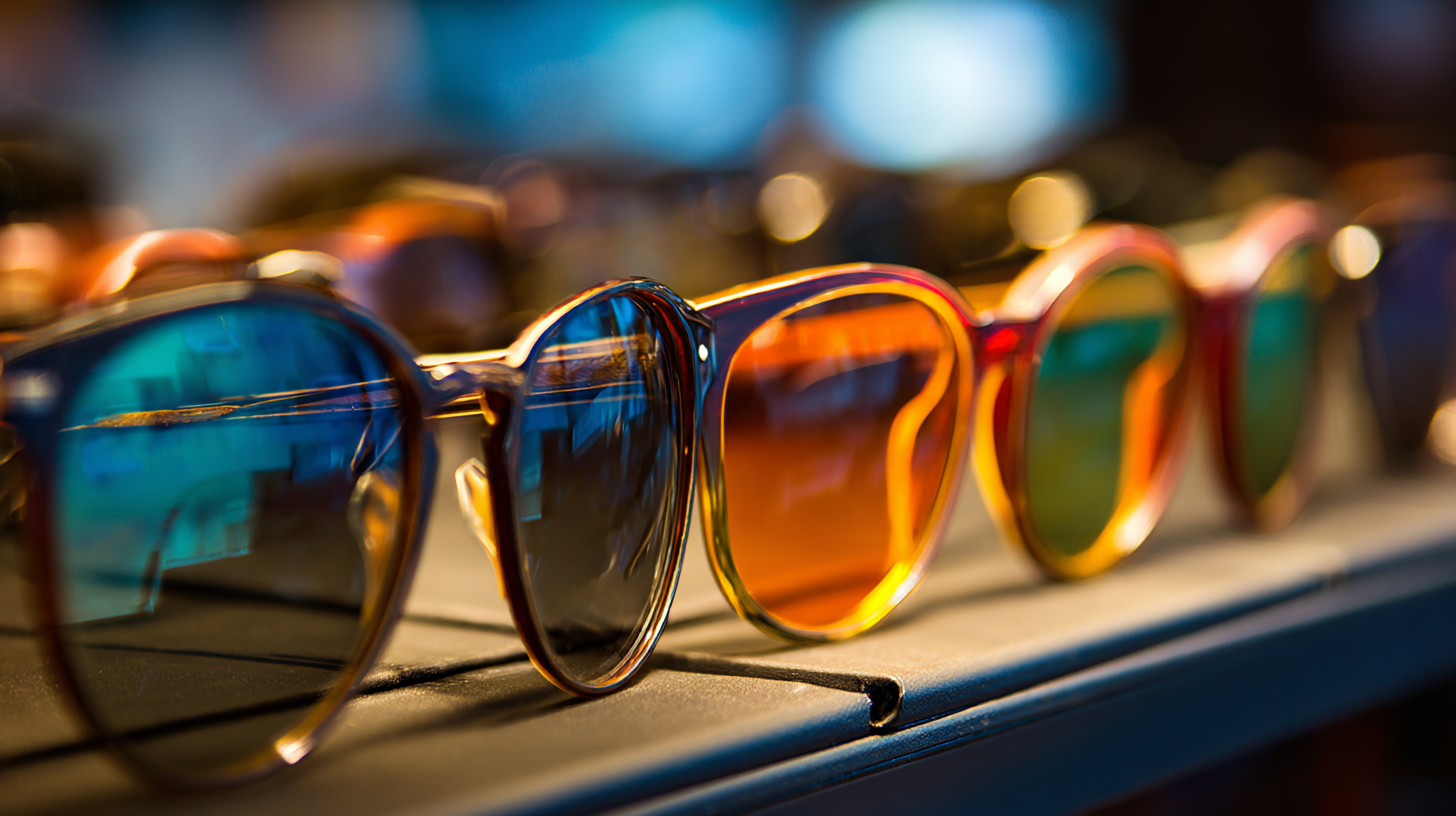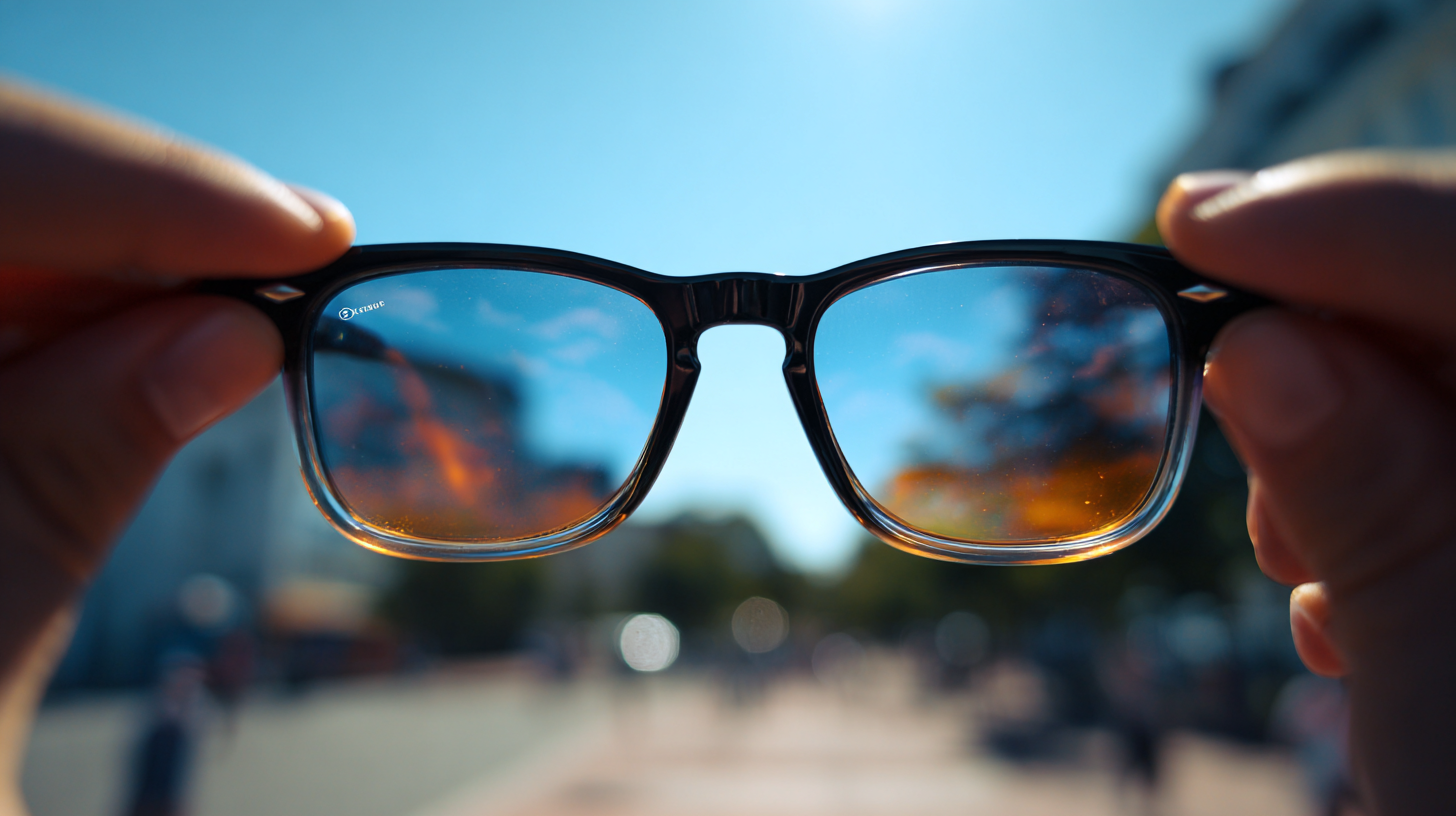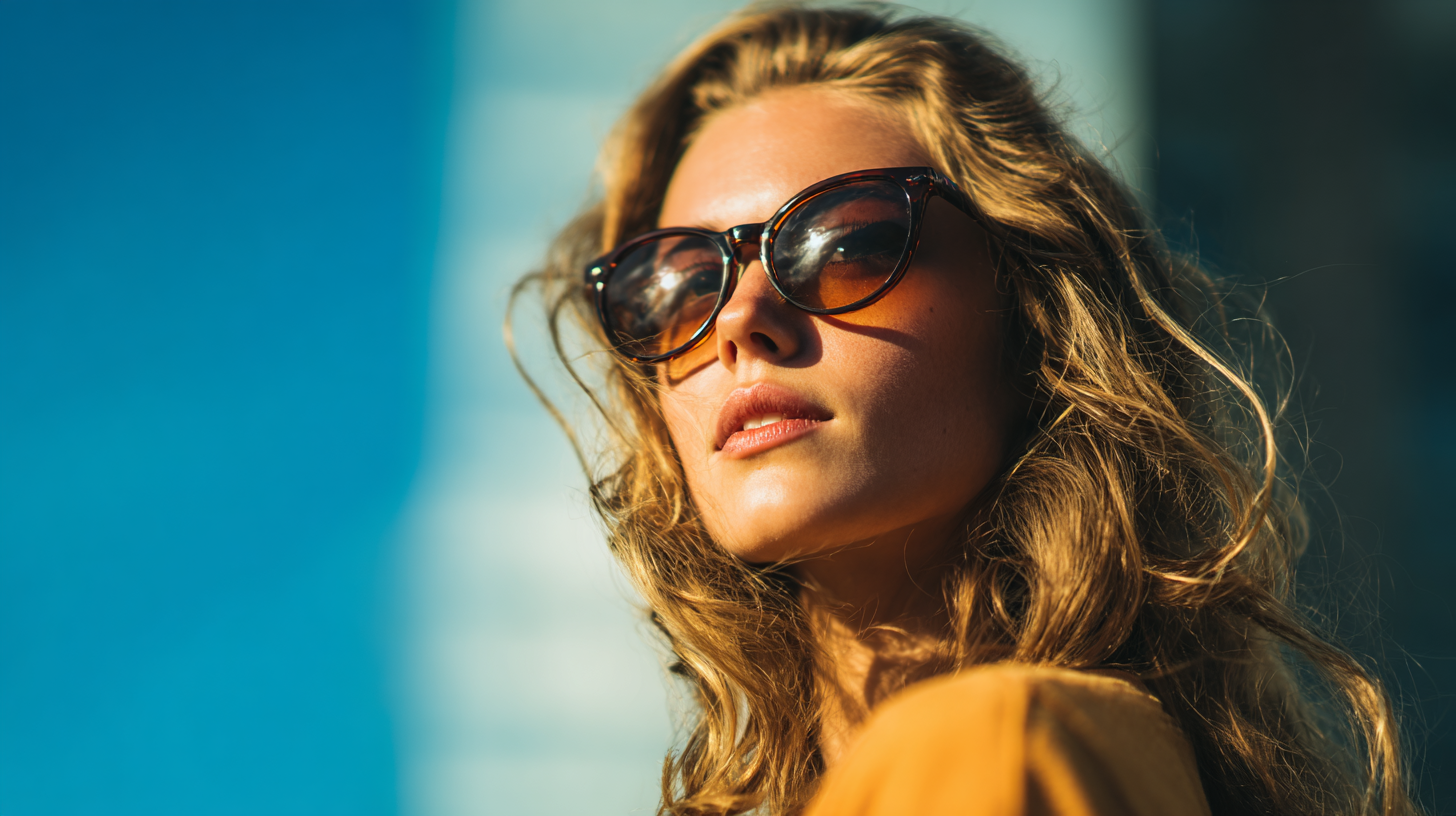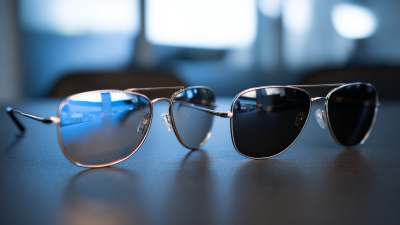 When it comes to selecting the perfect pair of sunglasses, the importance of
sunglass lenses cannot be overstated.
According to the Vision Council, nearly 75% of Americans wear sunglasses, yet many are unaware
of the critical role that lens quality plays in eye health. Studies indicate that prolonged
exposure to UV rays can lead to serious eye conditions, including cataracts and macular degeneration.
Additionally, the American Academy of Ophthalmology emphasizes that UV protection should be a
top consideration when choosing sunglasses, recommending lenses that block
100% of both UVA and UVB rays.
With a myriad of options available, from polarized to photochromic lenses, understanding the
specific performance attributes of sunglass lenses
becomes essential for protecting your vision while enjoying outdoor activities. This guide aims to
illuminate the essential factors to consider, ensuring that style does not compromise safety.
When it comes to selecting the perfect pair of sunglasses, the importance of
sunglass lenses cannot be overstated.
According to the Vision Council, nearly 75% of Americans wear sunglasses, yet many are unaware
of the critical role that lens quality plays in eye health. Studies indicate that prolonged
exposure to UV rays can lead to serious eye conditions, including cataracts and macular degeneration.
Additionally, the American Academy of Ophthalmology emphasizes that UV protection should be a
top consideration when choosing sunglasses, recommending lenses that block
100% of both UVA and UVB rays.
With a myriad of options available, from polarized to photochromic lenses, understanding the
specific performance attributes of sunglass lenses
becomes essential for protecting your vision while enjoying outdoor activities. This guide aims to
illuminate the essential factors to consider, ensuring that style does not compromise safety.
When selecting sunglasses, understanding the levels of UV protection in the lenses is crucial for safeguarding your eyes against harmful rays. UV protection is commonly categorized into three types: UV400, UVB, and UVA. Lenses labeled with UV400 indicate that they block 99-100% of both UVA and UVB rays, providing the highest level of protection. UVB rays are responsible for causing sunburn, while UVA rays penetrate deep into the skin and are linked to long-term skin damage and certain eye conditions. Therefore, choosing lenses with UV400 protection is vital for comprehensive eye safety.

Moreover, one should also consider the performance of the lenses in various lighting conditions. Polarized lenses, for instance, not only provide UV protection but also reduce glare from reflective surfaces, making them ideal for activities like driving or water sports. Additionally, photochromic lenses automatically adjust their tint based on light exposure, offering convenience and comfort throughout the day. By understanding these UV protection levels and performance features, consumers can make informed choices and ensure that their sunglasses effectively shield their eyes while enhancing visual clarity.
When selecting sunglass lenses, the material used can significantly impact performance and durability.
Polycarbonate lenses are known for their lightweight nature and high impact resistance, making them an excellent choice for sports and outdoor activities. Additionally, they provide 100% UV protection, ensuring that your eyes are shielded from harmful rays. Another popular option is Trivex, which offers similar benefits to polycarbonate but with enhanced optical clarity and even better strength.
Tips: Always choose lenses that meet the ANSI Z87.1 standard for impact resistance if you engage in high-energy activities. The clarity of lenses is equally crucial, as poor optical quality can lead to eye strain and discomfort.
Glass lenses, while heavier and less impact-resistant, are lauded for their superior optical quality and scratch resistance. They are ideal for individuals who prioritize visual performance; however, they may not be suitable for all situations due to their weight. When considering which lens material to choose, think about both your lifestyle needs and your aesthetic preferences to find the perfect balance.
Tips: Consider anti-reflective coatings for improved vision and to reduce glare, especially if you spend a lot of time in bright environments.
When selecting sunglasses, one crucial factor to consider is polarization, a feature that significantly enhances eye comfort and vision clarity. Polarized lenses are designed to reduce glare, which is especially beneficial when you're around water, snow, or any reflective surface. By filtering out horizontal light waves, polarized lenses allow for a clearer and more vibrant view of your surroundings while minimizing strain on your eyes.
**Tips for Choosing Polarized Lenses:**
- Look for sunglasses labeled as polarized; simply stating "UV protection" is not enough.
- Test the polarization by looking at a reflective surface through the lenses; if the glare is reduced, they are likely polarized.
- Consider your activities—if you frequently engage in outdoor sports or drive often, polarized lenses will enhance your vision and safety.
In addition to reducing glare, polarized lenses can also enhance color perception, making your experience outdoors more enjoyable. These lenses can provide superior clarity in bright conditions, allowing you to see details that might otherwise be washed out by the sun's glare. When you invest in quality polarized sunglasses, you're not just protecting your eyes; you're also improving your overall visual experience.
| Lens Type | UV Protection | Polarization | Best For | Performance Features |
|---|---|---|---|---|
| Gray Lenses | 100% UVA/UVB | Yes | Driving, Everyday Use | Color Neutrality, Reduces Glare |
| Brown Lenses | 100% UVA/UVB | Yes | Outdoor Activities, Golf | Enhanced Contrast, Depth Perception |
| Green Lenses | 100% UVA/UVB | Yes | Fishing, Water Sports | Improved Clarity, Reduces Eyestrain |
| Blue Lenses | 100% UVA/UVB | Yes | Fashion, Non-Sport Activities | Fashionable, Reduces Glare |
| Photochromic Lenses | 100% UVA/UVB | Yes | All-Day Use, Indoor/Outdoor | Adapts to Light Conditions |
Choosing the right tint for your sunglass lenses is essential for achieving optimal visual comfort and clarity. Different tints can enhance contrast, reduce glare, and even improve depth perception depending on the environment. For instance, gray lenses are popular for general use as they reduce overall brightness while preserving true color perception, making them suitable for driving. On the other hand, brown and amber lenses increase contrast and provide sharper vision in variable light conditions, often favored by outdoor enthusiasts.
Research from the American Optometric Association indicates that various lens tints can significantly affect the way our eyes perceive light. For example, a study found that yellow and amber lenses can block blue light, which may improve clarity in low-light conditions and reduce eye strain (AOA, 2022). Additionally, polarized lenses, often combined with specific tints, offer enhanced glare reduction, making them ideal for individuals engaged in activities like fishing or skiing where reflections can hamper visibility. By selecting the right tint for your sunglasses, not only can you enhance your vision, but you can also protect your eyes from harmful UV rays and improve your overall outdoor experience.

When selecting sunglasses, the type of lens coatings can significantly impact both durability and performance. Scratch resistance is a key factor; high-quality coatings provide an extra layer of protection against daily wear and tear, ensuring that your lenses remain clear and visually appealing for longer. Look for lenses that feature a hard coating, which not only resists scratches but also enhances the overall lifespan of your sunglasses. This is particularly important for outdoor activities, where environmental factors can pose challenges to your lens integrity.
In addition to scratch resistance, enhanced functionality is another critical aspect of lens coatings. Anti-reflective coatings can reduce glare, making them ideal for driving or spending time in bright outdoor settings. Moreover, hydrophobic coatings repel water and dirt, keeping your lenses clean and unobstructed. Some sunglasses also come with polarization that diminishes reflections from surfaces like water and roads, greatly improving visual clarity. By understanding these options, you can make an informed decision, ensuring your sunglasses not only protect your eyes from UV rays but also offer superior performance in various conditions.







